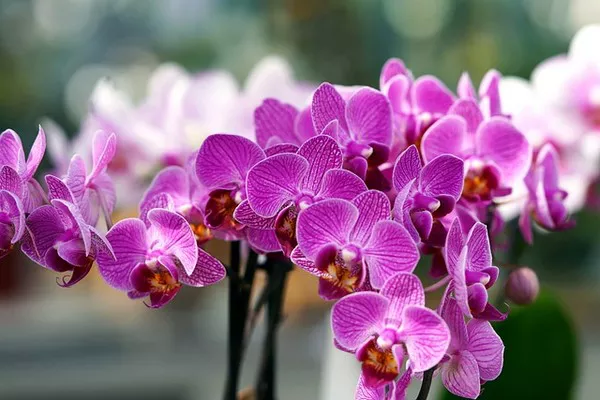Orchids, with their exquisite blooms and delicate allure, have captivated human fascination for centuries. Revered for their beauty and diversity, orchids are not just flowers; they are symbols of refinement and grace. Whether adorning a bridal bouquet, enhancing interior decor, or simply brightening a room, orchids hold a special place in the hearts of many. However, despite their allure, orchid blooms are ephemeral, often lasting only a few weeks. For those seeking to prolong the beauty of these exquisite flowers, understanding the art of orchid preservation is essential.
Introduction to Orchid Preservation
Orchid preservation is an age-old practice, dating back to ancient civilizations who revered these flowers for their symbolic significance and aesthetic appeal. Over time, various preservation techniques have been developed, ranging from traditional methods such as drying and pressing to modern approaches like freeze-drying and silica gel preservation. The goal of orchid preservation is to maintain the natural beauty and form of the flower while extending its lifespan indefinitely.
Understanding Orchids: Anatomy and Physiology
Before delving into preservation techniques, it is crucial to understand the anatomy and physiology of orchid flowers. Orchids belong to the family Orchidaceae, one of the largest families of flowering plants, comprising over 25,000 species and countless hybrids. Orchid flowers are renowned for their intricate structure, characterized by three sepals and three petals, one of which is highly modified into a lip or labellum. This unique morphology, along with specialized reproductive organs such as the column and pollinia, distinguishes orchids from other flowering plants.
Factors Affecting Orchid Preservation
Several factors influence the success of orchid preservation, including the species or hybrid variety, the condition of the flower at the time of preservation, environmental factors, and the chosen preservation method. Some orchid species are naturally more conducive to preservation due to their thicker petals or waxy cuticles, while others may prove more challenging. Additionally, the freshness of the flower at the time of preservation is critical, as flowers that are already wilting or damaged may not preserve well.
Preservation Techniques
1. Air Drying:
Air drying is one of the simplest and most traditional methods of preserving orchid flowers. To air dry orchids, carefully remove any excess moisture from the blooms and stems using a clean, dry cloth. Then, hang the orchids upside down in a well-ventilated area away from direct sunlight. The drying process may take several weeks, depending on the thickness of the petals and ambient humidity levels. Once fully dried, the orchid flowers can be displayed as they are or used in various craft projects.
2. Pressing:
Pressing is another classic preservation method that involves flattening orchid flowers between absorbent materials to remove moisture and preserve their shape. To press orchids, place them between layers of blotting paper or parchment paper inside a flower press or heavy book. Apply pressure evenly and allow the flowers to dry for several weeks. Pressed orchids can be framed, used in botanical art, or incorporated into handmade cards and stationery.
3. Freeze-Drying:
Freeze-drying is a more advanced preservation technique that involves removing moisture from orchid flowers using sublimation under vacuum conditions. This method preserves the natural color, shape, and texture of the flowers with minimal shrinkage or distortion. Freeze-drying equipment is typically expensive and requires specialized training to operate, making it more suitable for professional preservationists or botanical institutions.
4. Silica Gel Preservation:
Silica gel preservation is a popular method for preserving orchid flowers, offering quick results and excellent retention of color and form. Silica gel is a desiccant that absorbs moisture from the flowers while preventing shrinkage or damage. To preserve orchids with silica gel, carefully bury the flowers in a container filled with silica gel crystals, ensuring that the blooms are completely covered. Seal the container and allow the flowers to desiccate for several days to a week, depending on the size and thickness of the blooms.
5. Glycerin Preservation:
Glycerin preservation is a technique commonly used to preserve foliage and flowers by replacing the natural moisture with glycerin, a humectant that maintains flexibility and prevents dehydration. To preserve orchids with glycerin, mix one part glycerin with two parts water and submerge the stems in the solution. Place the container in a cool, dark place and allow the flowers to absorb the glycerin solution over several days to weeks. Glycerin-preserved orchids retain their natural appearance and flexibility, making them ideal for floral arrangements and crafts.
Best Practices for Orchid Preservation
Regardless of the preservation method chosen, there are several best practices to ensure successful results:
1. Selecting Healthy Flowers: Choose orchid flowers that are fresh, undamaged, and free from pests or diseases for optimal preservation.
2. Handling with Care: Handle orchid flowers gently to avoid bruising or damaging delicate petals and structures.
3. Controlling Environmental Conditions: Maintain stable environmental conditions, including temperature, humidity, and airflow, to prevent mold growth and ensure uniform drying or desiccation.
4. Regular Monitoring: Monitor the progress of orchid preservation regularly to detect any issues such as mold or over-drying and make adjustments as needed.
5. Proper Storage: Store preserved orchids in a cool, dry place away from direct sunlight and moisture to prolong their lifespan and prevent deterioration.
Conclusion
Orchids are not just flowers; they are living works of art that inspire awe and admiration wherever they bloom. Through the art of preservation, we can extend the beauty and elegance of orchid flowers, preserving their delicate forms for generations to come. Whether through traditional methods like air drying and pressing or modern techniques such as freeze-drying and silica gel preservation, the art of orchid preservation allows us to capture and cherish the fleeting beauty of these exquisite blooms indefinitely. By understanding the anatomy and physiology of orchids, considering factors that influence preservation success, and following best practices, enthusiasts and preservationists alike can embark on a journey to preserve the elegance of orchid flowers with confidence and skill.


